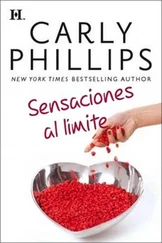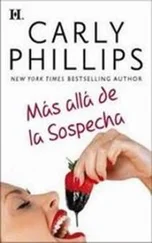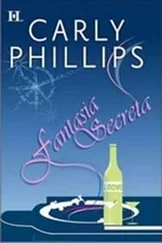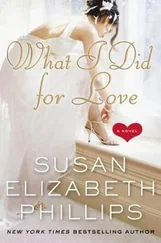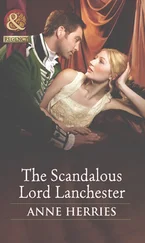Another memory of the forties was the taste of coffee. In 1949 his father had arrived home with a tiny sachet of real coffee twisted in a piece of brown wrapping paper. It was a gift from some bigwig who had been done a personal favour by his boss. That same evening Mr Phillips’s father carefully supervised his wife as she made a pot of coffee, standing fussily over the stove with something maternal in his solicitude for the ground brown beans. When the coffee was made his parents sat sipping it out of their best cups, not talking.
‘Would you like a taste?’ his father asked. Mr Phillips had been too shy to ask; except of course that standing by the kitchen table softly panting was in itself a way of asking. He nodded and his father passed to him the thin blue and white china cup. With both hands around it, Mr Phillips took a careful sip, and at the same time caught his first noseful of the acrid, hot aroma. Luckily he did not gasp or spit but handed the cup back to his father without mishap.
‘Well?’ his father asked. Mr Phillips was at a loss for words. He said:
‘Thank you, papa.’
His father smiled and returned to his communion with the cup.
‘It’s really for grown-ups,’ he said. There is still a certain coffee taste — the bottom of the mug in a colleague’s office, or a really nasty after-dinner cup in a friend’s house — which transports him as if physically back to their kitchen in Wandsworth in 1949, when the thin, acrid, bitter, watery taste had been the rarest and most precious thing in the world.
Mr Phillips moves past a couple who have positioned themselves almost blocking the entrance to the main gallery, each holding one end of a folded-out plan, like scheming generals. They are in comfortable, spreading middle age — the man’s shoulders, waist and hips slide downwards into each other as easily as Mr Phillips’s own — but are dressed like students in jeans and clumpy trainers.
‘I dunno,’ says the man. His accent is American but once had not been; he is from somewhere else, Ulster or Scotland perhaps. Hybridized accents are harder to unpick than neat ones, even for the English, every single one of whom has a top-of-the-range on-board computer calculating the exact geographical and social location of the speaker every time somebody opens his mouth. Grammar school-educated Mr Phillips’s accent is Received Pronunciation overlying a stratum of South London. Martin and Tom both speak with a mild South London rasp that they can, especially Martin, roughen up or tone down at will. Mrs Phillips speaks a beautifully neutral form of RP that Mr Phillips had once found sexy — it was part of the idea of having sex with someone posher than you were. Class makes sex more interesting for everybody. Karen’s accent, East London verging on Essex, is sexy too, but in a more straightforwardly sluttish way. And there is something about the limitless reserves of indifference she can express, the thrilling estuarine boredness of her ‘Yeah’.
The woman holding the map with the mystery-accent man is wearing jeans that reveal her waist size to be 36 and her inner leg to be 30. Truth in advertising.
‘The Pre-Raphaelites just don’t do it for me,’ she says.
‘They were fags,’ says the man.
‘Ruskin was definitely a fag.’
‘Watts sure paints like one.’
That seems to cover the subject.
*
Mr Phillips heads into a long narrow room with sculptures that runs down the centre of the building. As always when he goes to a museum his impetus runs out very quickly once he has got inside. He has a feeling that he is looking for something that is not there, and what is worse, that everyone else is too. Or that they know something which he doesn’t. Or that there are a set of feelings he is supposed to have in the presence of art but which in his case are simply absent. If he is honest with himself he would rather have been looking at photographs of naked women. If he is to look at things he would rather look at things that are forbidden.
Mr Phillips stands in front of a sculpted head by someone called Henri Gaudier-Brzeska. The head is two different heads melted into one, or has two very different halves, with one eye higher than the other and a nose that points off to the left as you look at it. At the same time it has a streamlined quality. Also there is something Polynesian about it. Like all those modern things with different bits and projections it implies that people are different at different times and contain lots of aspects to themselves. We are all many. Seven out of ten.
Mr Phillips stands in front of Ophelia by Millais. She is lying there waiting to drown. Mr Phillips has never seen a dead woman. The field was limited: his grandmother had had a closed coffin and in any case he had only been seven years old. Mr Phillips’s mother went to live in Australia with his sister when his father died in 1981. When she dies he will go to the funeral; this grieving twenty-four hour plane trip, the longest and worst journey he will ever make, looms somewhere in the future.
Unless it is a side-effect of hearing the couple under the rotunda, this is one of the paintings that make you wonder about the sexual life of the painter. Had he liked the idea of doing it with a dead girl? Some men did. At his first employer, Grimshaw’s, Mr Phillips knew a man called Smilt whose sister had told him that her husband liked her to have a very cold bath before coming to bed and then lying absolutely still. What made it worse was that the man was an undertaker. Mr Phillips had filed that one under ‘It takes all sorts.’
Also, this painter obviously had a thing about hair. And people who had a thing about hair were supposed to be masochists. Or was that people who had a thing about feet? But that went oddly with liking dead girls; surely you couldn’t like the idea of having pain inflicted on you by a dead girl? No. And then there was the redhead aspect. This was a whole subject in itself. Mr Phillips had never been to bed with a redheaded girl and felt envious of anyone who had. But when you thought about it, Millais might well not be in that category.
Also, if she was mad surely she wouldn’t be calmly floating on her back like that? Six out of ten.
Mr Phillips stands in front of The Boyhood of Raleigh. A colourfully dressed man is sitting talking to two boys. He has an earring and a headkerchief. Nowadays this scene would probably be reported to the police and you could be fairly sure he was a pervert. Mr Phillips has virtually a whole album full of photographs which would now stand a decent chance of getting him and Mrs Phillips arrested, some busybody at Boots tipping off the police to raid them and take away pictures of Martin and Tom in various states of undress, in the bath, in bed, asleep and so on. It has to be admitted that the pirate-type man bullshitting away to the little boys does not look the opposite of a paedophile; there certainly is something over-eager about him, and if he does like little boys, the young Raleigh’s adorable frilly collar would presumably be like a ham sandwich spreading itself with mustard and lying down in front of a hungry man with a cry of ‘Eat me, eat me!’ And then of course sailors were notoriously keen on all that. Plus the idea of the picture was so stupid, as if you ended up doing what you did because someone had told you yarns as a child — as if his father had spun tales about the glamour and wonder of accounting, or he had dandled Martin on his knees and kept him spellbound by recounting the glorious annals of the recording industry. Five out of ten.
Mr Phillips stands in front of The Fairy Feller’s Master Stroke by Richard Dadd. This is a picture he has been to look at on each of the four occasions he has gone to look around the Tate (early date with Mrs Phillips, when he was trying to seem cultured; two visits with his sister and her daughters when they came to London and were doing the sights; and this one). This is on the borderline for disqualification from being a true Londoner, since as all Londoners know, real Londoners never go to do or see anything in their own city. The exception is those unfortunates with small children, forever having to go to circuses and cartoons and pantomimes and adventure playgrounds and rare breed parks. But that doesn’t really count. In his fifty years in the city Mr Phillips has been to the Tower of London once, on a school trip; the British Museum twice, once on a school trip and once with his nieces while his sister and Mrs Phillips went shopping; Madame Tussaud’s once, with Martin and Thomas; once to the National Gallery for the same reason; once to the National Theatre with Martin; and that was more or less it, so that he had never once been to Kew Gardens or Hampton Court or the naval museum at Greenwich or Teddington Lock or the Royal Opera House or the Barbican or the Trooping of the Colour or the Changing of the Guards or the Last Night of the Proms or indeed the Proms (Mrs Phillips went enough for both of them) or the Motor Show or the Planetarium or the annual open day in Highgate Cemetery. Excluding annual visits to the Richmond pantomime between 1977 (after Martin’s sixth birthday) and 1989 (Tom’s tenth) he has been to the theatre five times, which is five times more than he would have gone if it had been left entirely to him.
Читать дальше
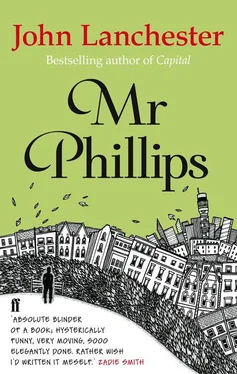
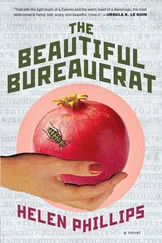
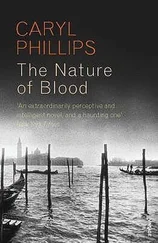
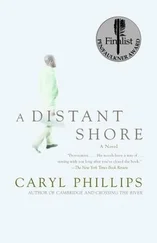
![Unknown - [Carly Phillips] The Bachelor (The Chandler Brothe(Bookos.org) (1)](/books/174132/unknown-carly-phillips-the-bachelor-the-chandle-thumb.webp)
